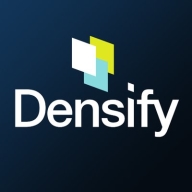

CloudStack and Densify compete in cloud management solutions. Based on advanced features, Densify has the upper hand due to its sophisticated resource management approach.
Features: CloudStack features scalability, robust API, and straightforward cloud orchestration, suitable for customizable solutions. Densify offers real-time optimization, AI-driven analytics, and efficient resource management, making it a sophisticated option.
Room for Improvement: CloudStack could expand its advanced analytics and real-time optimization capabilities. Enhancements in AI integration would also benefit its scope. Additionally, simplifying its interface for advanced configurations might enhance user experience. Densify might streamline its deployment process for simplicity. Expanding its support for diverse environments could increase flexibility. Improvement in initial setup costs might make it more accessible for budget-conscious users.
Ease of Deployment and Customer Service: CloudStack offers a simple deployment model with strong support, appealing for straightforward setups. Densify provides a comprehensive customer service experience, aiding complex deployments and ensuring efficient management.
Pricing and ROI: CloudStack, known for cost-effectiveness, presents a reasonable ROI due to its open-source nature. Densify, despite higher initial costs, offers substantial ROI by optimizing resource utilization and reducing long-term expenses, justifying its price with enhanced returns.


Densify is a hybrid cloud and container resource management platform that makes workloads self-aware of their precise resource requirements and automates the resource management and selection process. This solution helps you control your cloud spend and also helps your apps perform and scale better. Densify enables you to match your cloud requirements with the optimal cloud supply. Additionally, Densify is the only technology that leverages patented, predictive machine learning-powered analytics to perform advanced modeling of workload patterns, and provide precise optimization directives. It is ideal for cloud engineers, container platform owners, and IT finance.
Densify works by:
Densify Features
Densify has many valuable key features. Some of the most useful ones include:
Densify Benefits
There are many benefits to implementing Densify. Some of the biggest advantages the solution offers include:
We monitor all Cloud Management reviews to prevent fraudulent reviews and keep review quality high. We do not post reviews by company employees or direct competitors. We validate each review for authenticity via cross-reference with LinkedIn, and personal follow-up with the reviewer when necessary.